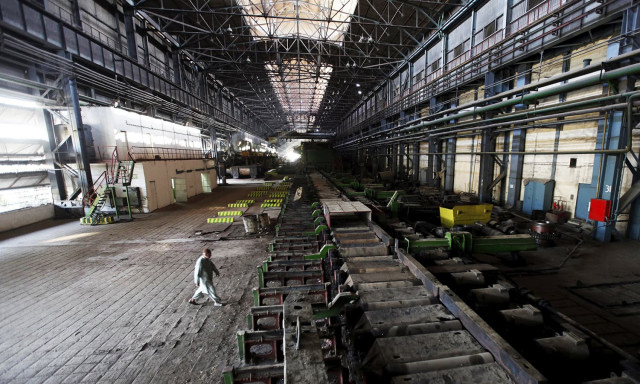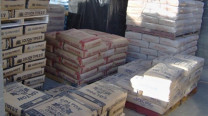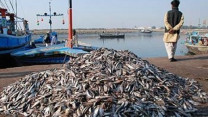Institutional capacity: The most critical missing essential
Deficiency can be traced to institutions driving economy that are run by bureaucrats

We hear a lot about our economic potential but seldom about the abject lack of capacity to create value from the same.
The deficiency can be traced to a gross anomaly that the institutions driving the economy are primarily driven by bureaucrats; a role which in the current era of knowledge-based economies has long been taken over by professionals in all successful economies.
This article is an attempt to highlight the ravages of this phenomenon by using the example of Pakistan Steel Mills (PSM).
The mankind’s history would have been very different if we had not discovered iron in 1200 BC. It made farming easier and also provided more effective weapons for warfare, thereby increasing man’s mobility and capacity to produce.
What further augmented its utility was when man learned to make steel, or rather carbon steel, by adding carbon to it, which adds ductility and strength to iron. It is this discovery in 500 AD which shortened man’s journey to industrial revolution.
Globally, iron ore accounted for 93% of the metals mined in 2021. Around 98% of the same was consumed in producing crude steel, whose global production has increased by 10 times from 1950 till now.
China produces 50% of the same, India 10% of what China produces, while Pakistan hardly 3.2% of what India produces.
In 1949, Pakistan’s government invited an American company to recommend viable options for obtaining crude steel, which submitted its report in 1950.
In 1951, Koppers of the US were engaged to develop a detailed plan while simultaneously engaging a German company for primary investigations into indigenous iron ore, whose results confirmed its viability.
Further field work confirmed a huge deposit of the ore in Kalabagh and in 1956, Krupp – the German steel giant – offered to set up a mill based on the same.
Subsequent geological surveys in 1961-63 confirmed 250 million tons of iron ore reserves in Kalabagh, whose pilot test in 1964 confirmed feasibility of a steel mill, further verified in 1966 by Salzgitter AG of Germany by producing 5,000 tons of steel from the same.
Salzgitter also then offered to set up a mill of 0.8 million tons per year (MTPY) capacity based on the said ore.
In 1968, the government offered the Kalabagh project to Russia. Their report, however, concluded that a mill on the said ore would be unviable and instead offered to establish a 1.1 MTPY capacity PSM in Balochistan. The offer was accepted but the location was later shifted to Karachi and the mill’s foundation stone was laid in 1973.
Justification for preferring imported over indigenous ore was not only very weak but viable concepts of mini-steel mills based on arc furnaces using indigenous ore and coal or on DRI process using local ore and Sui gas were also ignored. Thus, after 24 years of due diligence, we ended up selecting a majorly handicapped model.
Journey since 1985 till now
Followed by the commissioning of its blast furnace in 1981, the project was completed in 1985. During its chequered history, it observed only short spans of sustainable performance such as under the leadership of Gen Sabeeh from 1992 to 1994, when it achieved capacity utilisation of 95%.
He also initiated plans for the mill’s capacity augmentation to 3 MTPY. Later, first under the stewardship of Col (Retd) Afzal from 1999 till 2003 and then General (Retd) Qayyum from 2004 till 2006, it also exhibited exemplary performance.
Thus, by 2002 it started generating profits which by 2005 accumulated to Rs4.866 billion with a corresponding increase in its capacity utilisation to 94% by 2003-04. It is indeed incomprehensible that with the given ongoing progress, an attempt was made at privatising the mill in 2006.
It was able to maintain the preceding trend till 2008 and thereafter plunged into a bottomless pit of degeneration, thereby accumulating losses of Rs130 billion by 2015.
Surprisingly, the finance ministry’s economic surveys of the period were hardly reflecting the given dire situation. For instance, the survey of 2009-10 expressed plans for capacity augmentation to 3 MTPY by 2015-16 and gradual import substitution of the mill’s 30% annual ore requirement.
The subsequent survey reported even receipt of 10 EOIs for capacity augmentation. The 2012-13 survey reported approval of a restructuring plan while that of 2015-16 reported the mill’s closure.
The obvious disconnect between the crisis and the surveys’ updates, reflects not only lack of capacity of those in charge but also their lackadaisical attitude.
Another exhibit of the category is that between 2009 and 2013, the mill saw five chairmen. No wonder, that by the end of 2013-14, its capacity utilisation had dropped to 6%.
Ironically, when in 2013, the new government with the intent to facelift the mill injected equity of Rs18.5 billion and its capacity utilisation reached 34%, none other than a government’s arm, ie SSGC, disconnected its gas supply on June 10, 2015 in lieu of its pending payments.
Later, in January 2017, the government decided to lease out PSM for 30 years and negotiated an agreement with a Chinese company, which was, however, never implemented. Since then, there have been several opportunities of reviving the mill under various commercial synergies including long and short-term lease, transfer of ownership and operating rights, etc.
While we continue to drag our feet, PSM’s losses and liabilities have accumulated to above Rs700 billion by now. In comparison, Iran had also started with a steel mill of 0.55 MTPY in 1972 with USSR’s cooperation, whose capacity is now 4.6 MTPY.
What is to be done
The above episode sufficiently highlights our capacity gaps in profitably processing the simplest ore to even crude steel, thus rendering all claims about potential to be futile, ie until we rid ourselves of the abject poverty of capacity, particularly reflected through incompetent PSEs’ boards.
They, in turn, prefer weak and subservient managements. If, by any chance, they ever come across professional managements, then, generally, all possible antics are deployed to make them fall in line by embroiling them in frivolous inquiries and marginalising them by foisting incompetent cronies above them etc.
Those who still refuse to tow the line are made to go through more heinous tactics, such as concocted NAB and FIA cases.
I am aware of a similar case when a PSE’s employee repeatedly requested, against false charges, for an independent third-party audit but it was unabashedly blocked by its board. Later to harass him further, he was implicated in an FIR by feeding false information to FIA while the audit remained blocked.
Tapping of economic potential and persecution of upright professionals, instead of respecting and utilising them for creating value for the nation, cannot go together.
Another example also seems apt. Since the recent mining summit in Islamabad, the new fad is our mining potential of $6.1 trillion. With the given context, even a cursory review of the annual balance sheets of the pertaining mining national and the structure and composition of the corresponding boards would suffice to highlight the urgency of attending the above issue.
The writer is a petroleum engineer and an oil and gas management professional
Published in The Express Tribune, August 21st, 2023.
Like Business on Facebook, follow @TribuneBiz on Twitter to stay informed and join in the conversation.



















COMMENTS
Comments are moderated and generally will be posted if they are on-topic and not abusive.
For more information, please see our Comments FAQ